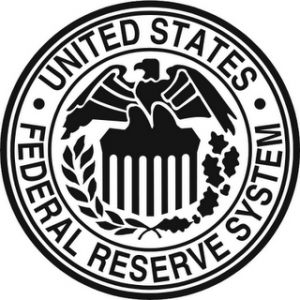3 Minutes Read
I am the author of this blog and also a top-producing Loan Officer and CEO of InstaMortgage Inc, the fastest-growing mortgage company in America. All the advice is based on my experience of helping thousands of homebuyers and homeowners. We are a mortgage company and will help you with all your mortgage needs. Unlike lead generation websites, we do not sell your information to multiple lenders or third-party companies.
 Ben Bernanke must be tearing his hair (whatever is left of it). He has increased Fed’s balance sheet to an all time high of almost $3 trillion mostly through bond purchases. But the mortgage rates haven’t declined as much he would have hoped. He is frustrated that the lower yield on mortgage backed securities are not being passed on to the borrowers in form of lower mortgage rates. In fact, he called the trend “unfortunate” and Federal Reserve Bank of New York held a workshop to examine the issue.
Ben Bernanke must be tearing his hair (whatever is left of it). He has increased Fed’s balance sheet to an all time high of almost $3 trillion mostly through bond purchases. But the mortgage rates haven’t declined as much he would have hoped. He is frustrated that the lower yield on mortgage backed securities are not being passed on to the borrowers in form of lower mortgage rates. In fact, he called the trend “unfortunate” and Federal Reserve Bank of New York held a workshop to examine the issue.
Imagine 30 year fixed mortgage rates dropping to under 3%. It will bring in another wave of refinance and help homeowners across America save hundreds and thousands of dollars every year. Bernanke was hoping this saving will further increase consumer spending and provide the economy and employment with much needed push.
Why the 30 year fixed mortgage rates should be at 2.75%?
The spread between so-called primary and secondary rates are at about 1.1 percentage points, compared with less 0.7 percentage point in March and an average of about 0.5 percentage point in years before the credit crisis, according to data compiled by Bloomberg. Primary rates are what lenders charge from the borrowers and secondary rates are what they are paid when they sell the same loan in secondary market. If the spread was back to 0.5% as was the case before the credit crisis, that would mean mortgage rates to the borrowers improving by 0.6%. The current average 30 year fixed mortgage rates are just under 3.40%, which means the rates should have been below 2.80%.
Some say the higher spreads reflect bank profiteering. A study from the New York Fed earlier this month calculated that banks earn about $5 per $100 in loans they originate today, up from $4 in 2009 and $2 from 2005-2008.
Banks have their own story on why the rates are not that low
There are several reasons for spread to be higher and banks maintaing a higher profit margin. As Bernanke himself conceded, other changes in the industry are contributing to higher spreads. Those changes include higher fees charged by Fannie Mae and Freddie Mac and reduced capacity at the banks.
Banks realize that low mortgage rates are not going to last forever. Hence they are reluctant to add more staff and increase the fixed cost. This results in longer processing time for a loan. Also, with tighter underwriting guidelines, many more income, asset and credit documents are analyzed by bank’s underwriters to ascertain a borrower’s credit worthiness. All this results in more processing cost for the bank.
Mortgage industry officials say that rising litigation expenses, federal and state investigations, and new regulations have created a cost structure that is difficult to predict. “Until we have a rational, articulated plan where institutions know they can extend credit in a way that protects them as well as the consumer, I think we’re going to see these spreads stay wide,” said David Stevens, chief executive of the Mortgage Bankers Association.
However, some experts also point out that its a case of too much business and too little competition. Since banks have more business than they can handle at the offered rate, there is no incentive for them to reduce the rate further. Once these low mortgage rates start to rise and refinancing business starts taking a hit, we may see these spreads narrowing down.
No one is complaining a 3.5% mortgage rate. But the gain to economy and employment can be huge if the banks decide to make less profits and rates fall below 3%. Bernanke still hopes that would happen and I do so too. Will it actually happen or not – only time will tell.
You May Also Like:
- 10000Mortgage Rates How to Shop Mortgage Rates Like a Pro This easy-to-follow guide covers everything you need to know about shopping for mortgage rates, and how to do it like the pros. Start from the beginning or jump in wherever you are to continue! 1 Basics of Mortgage Rates Where…
- 10000
- 10000Shopping for the best Mortgage rate possible has always been the primary objective when borrowing a home loan. As well it should be! The challenge with this strategy is that there is much misleading information released on the subject by various media. Internet websites and email marketing, along with other…





